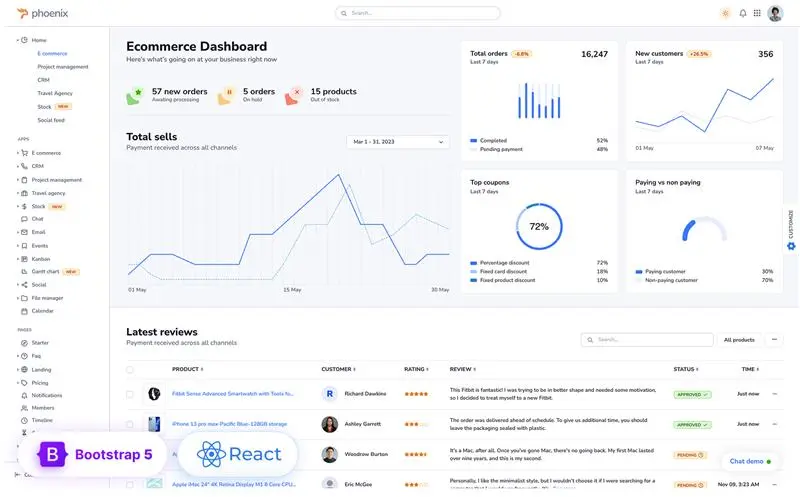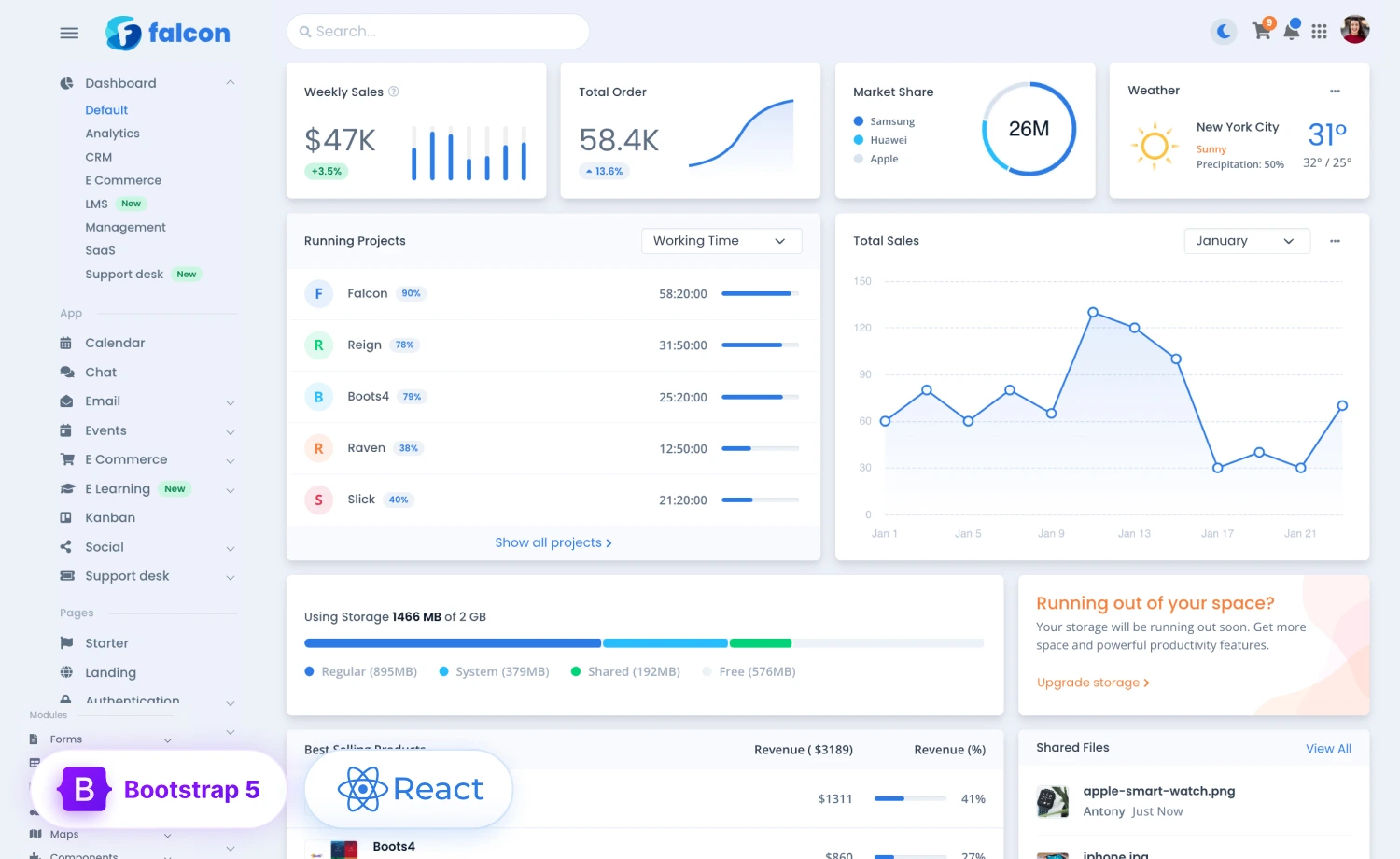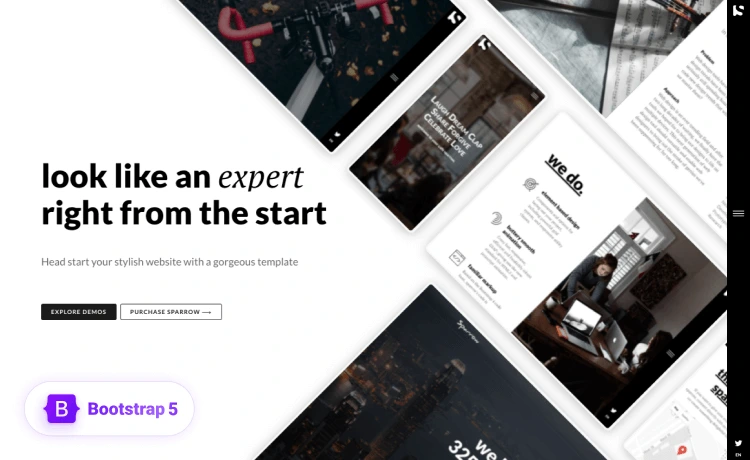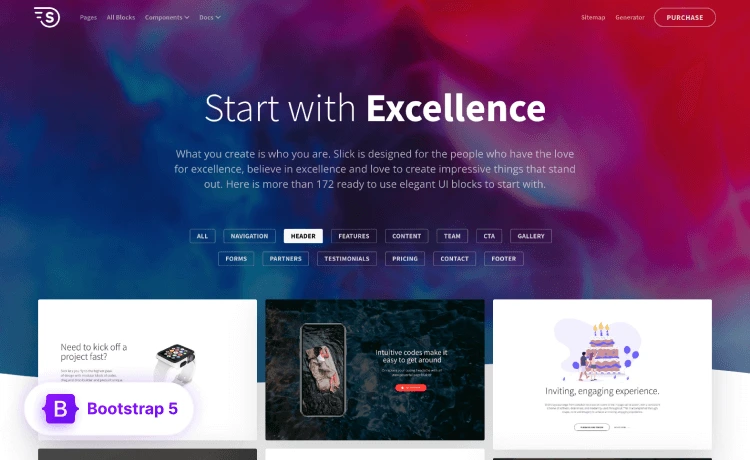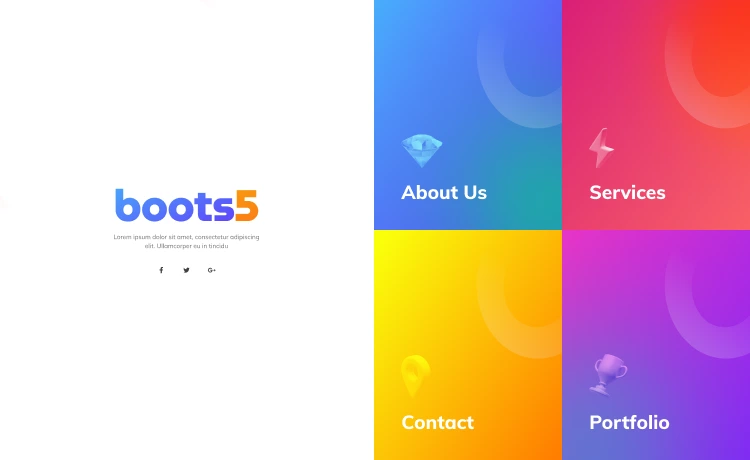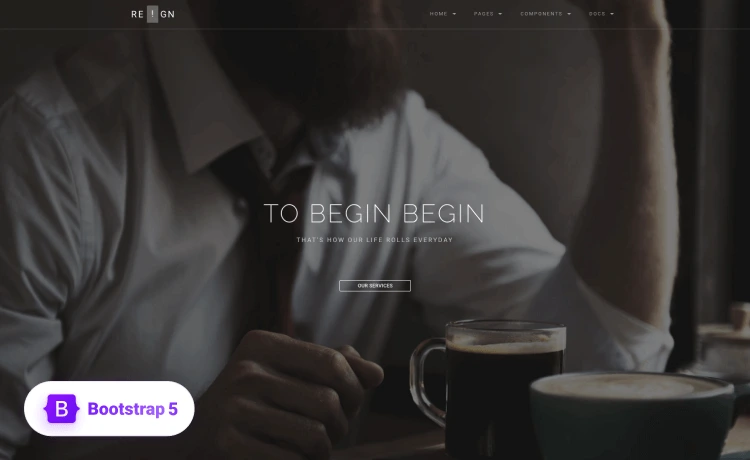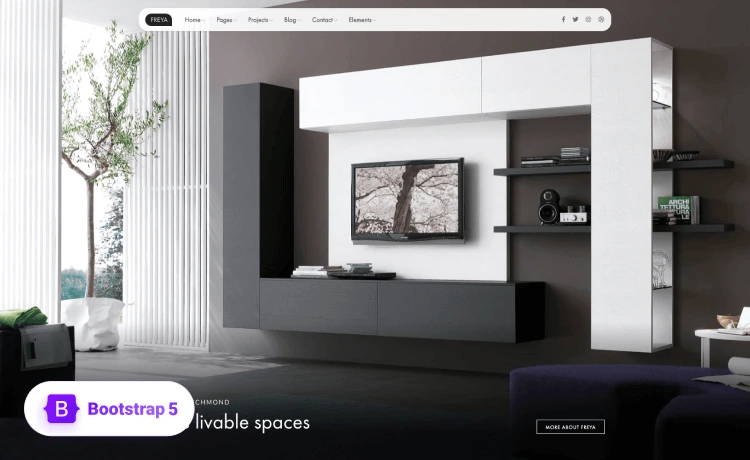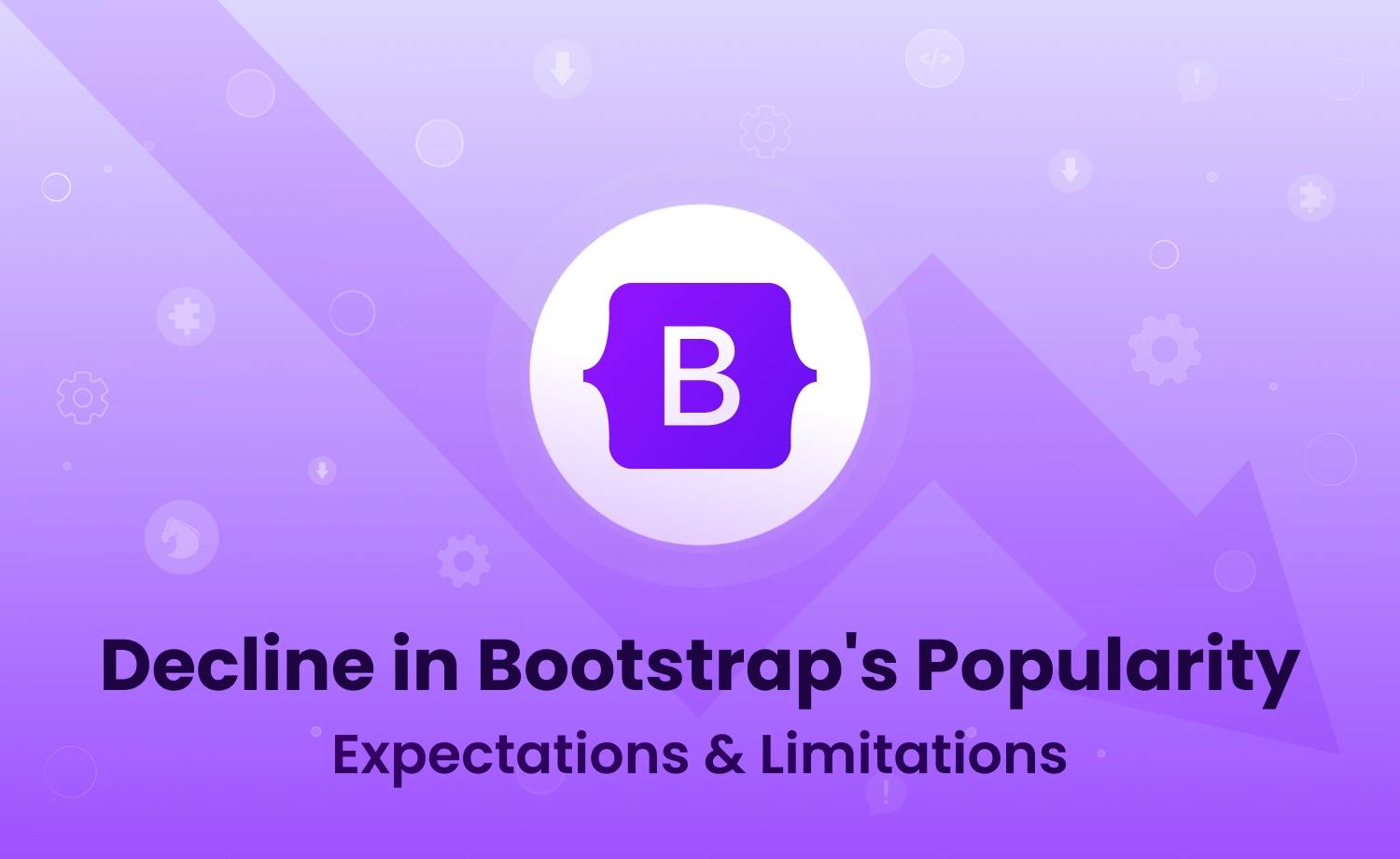
Bootstrap’s popularity is declining due to its limitations and lack of flexibility. Its drawbacks range from bloated CSS files, over-dependency on the Grid, generic design, dependency on JavaScript, to advanced customization difficulties. While CSS Grid and CSS Custom Properties replace Bootstrap’s grid system, additional CSS frameworks speed up development for current developers. As a result, Bootstrap is being outdated in the long run.
In today’s fast-evolving web development landscape, Bootstrap is experiencing a noticeable decline in popularity. Once a performance king with a massive community and plug-and-play components, it’s now making developers to look elsewhere for its default look and limited flexibility.
As developers grow more experienced and design priorities continue to shift, Bootstrap’s limitations are becoming harder to ignore.
In this blog, we’ll explore the drawbacks of Bootstrap and uncover the key reasons why it’s losing momentum in modern frontend development.
![]() Design intuitive & fully responsive layouts! Learn how to use symmetric design system of MUI Grid!
Design intuitive & fully responsive layouts! Learn how to use symmetric design system of MUI Grid!
Bootstrap’s Limitations: Why It’s Falling Behind
Although Bootstrap has set trends over the years, it comes with some limitations. The framework’s component styles and utility classes enforce a specific design approach, leading to an opinionated design system. This limits customization and slows down the adoption of modern development practices.
Some of these limitations are key reasons behind Bootstrap’s declining popularity:
| Drawbacks | Struggles |
|---|---|
| Bloated CSS File | Imports the whole library with unnecessary components, resulting in a large CSS file. |
| Grid-Only Layout | Unnecessary ‘12-column grid system’ and reduces flexibility |
| Generic Design | All Bootstrap sites lack uniqueness unless substantially customized |
| JS-Dependency | Over-dependency on JavaScript for key components causes performance and accessibility issues |
| Limited Customization | Deep customization requires digging into Sass variables or writing complex utility overrides |
Bootstrap’s Popularity: What’s Driving the Decline
Today’s web development is all about design freedom, easy framework integration, and smooth developer experiences. Bootstrap has faced difficulties to keep up with these new priorities for its imperative styling model. Which is why, developers have gradually moved away, and the framework has seen a steady decline in popularity.
Bootstrap’s declining popularity is caused by several key factors that reflect the evolving landscape of modern web development. Let’s check them out:
Emphasis on Custom Styles
Bootstrap sites often look identical, unless heavily customized. Deep customization requires heavy overriding of the default styles and modifying the SaaS variables. So, the effort it takes to ‘un-Bootstrap’ a design often becomes tiring. Therefore, it doesn’t help enough to create websites for distinctive brand identities.
Businesses like Spotify, Stripe, and Airbnb have already stopped using framework-based design. Industries are more focused on branding with unfamiliar or unique visual languages that set them apart from their rivals.
Besides, while efficient with the component-heavy approaches, Bootstrap makes it challenging to achieve truly custom web designs without significant overrides.
![]() Take control of your front-end — customize everything! Start at $59.
Take control of your front-end — customize everything! Start at $59.
Compatibility with Other Frameworks
Bootstrap’s core interactive components like modals, dropdowns, tooltips, carousels, offcanvas menus, and collapsible sections rely heavily on JavaScript to function. It creates –
- Framework Conflicts: When working with modern JavaScript frameworks like React, Vue, or Angular, Bootstrap’s native JavaScript (written in vanilla JS or jQuery in earlier versions) can conflict with component lifecycles or reactivity.
- Extra Payload: Even in Bootstrap 5 (which removed jQuery), many components still require you to include Bootstrap’s own JavaScript bundle. That adds more bytes to the final build.
React Bootstrap, ng-bootstrap, and Vue-Bootstrap exist to bridge the gap, but they add complexity and don’t always provide seamless integration that native solutions offer. You can’t just use one part without importing the whole library.
Moreover, many developers prefer framework-specific declarative UI logics and responsiveness across the frameworks, while Bootstrap still uses imperative APIs that trigger actions in JavaScript manually.
Evolution of CSS Layout Modules
Bootstrap’s popularity risen because it solved one of the biggest problems – layout, thanks to its powerful Grid system. But now, CSS layout modules ensure more flexibility and layout control than Bootstrap’s pre-defined Grid.
The native CSS features like – Flexbox, CSS grid, or Box Model simplifies creating complex layouts with less CSS overrides. They adapt automatically without specifying any breakpoints and provides more sophisticated responsive design.
Additionally, modern CSS features like container queries and responsive units such as clamp(), min(), and max() provide developers full design control without extra tools, while Bootstrap chose to stick with Flexbox for its core grid system.
Slow Adaption with New Design Trends
As web development evolves rapidly, projects are getting more complex. In this situation, developers require faster and stable updates or releases of their favorite frameworks. Unfortunately, Bootstrap seems to have struggled to deal with the new dev expectations.
Despite new updates such as improved utility classes or the removal of jQuery dependencies, Bootstrap is increasingly seen as outdated in modern web development standards.
While frameworks like Tailwind CSS release frequent updates with new utilities and improvements, Bootstrap’s major releases are less frequent and sometimes lag behind modern CSS features and design trends.
![]() Explore the best Free & Premium Admin & Dashboard Templates to use in 2025!
Explore the best Free & Premium Admin & Dashboard Templates to use in 2025!
Now, you might be thinking, “Many projects still run just fine using Bootstrap’s utility classes, so isn’t it still popular?”
Even if there are many challenges, Bootstrap is used by nearly 27% of websites according to recent statistics, indicating its ongoing popularity in specific use cases.
However, there are some Bootstrap sites that will still need rapid maintenance for the next 10 years. Hence, it’s true that the framework is aging. Also, if it doesn’t reinvent radically, there is a chance that this powerful CSS framework may be considered as an outdated practice in web development.




